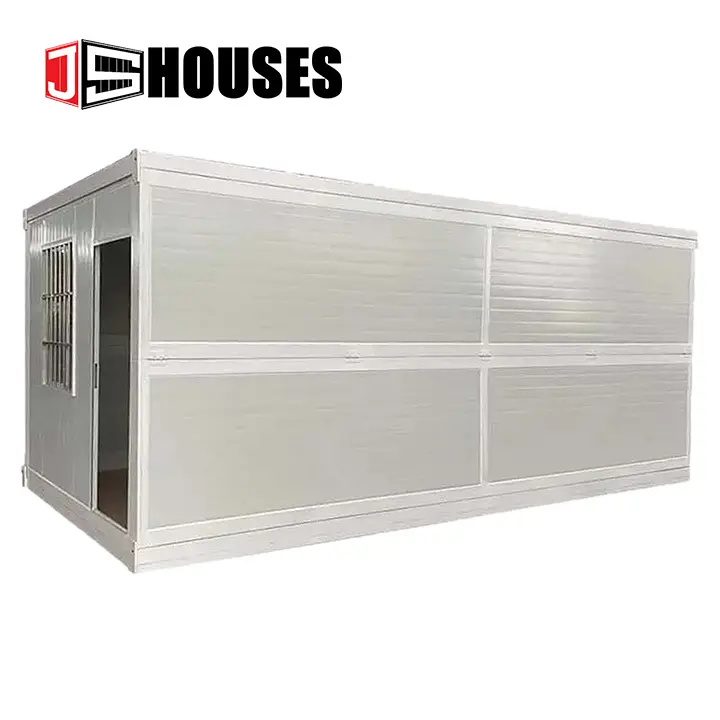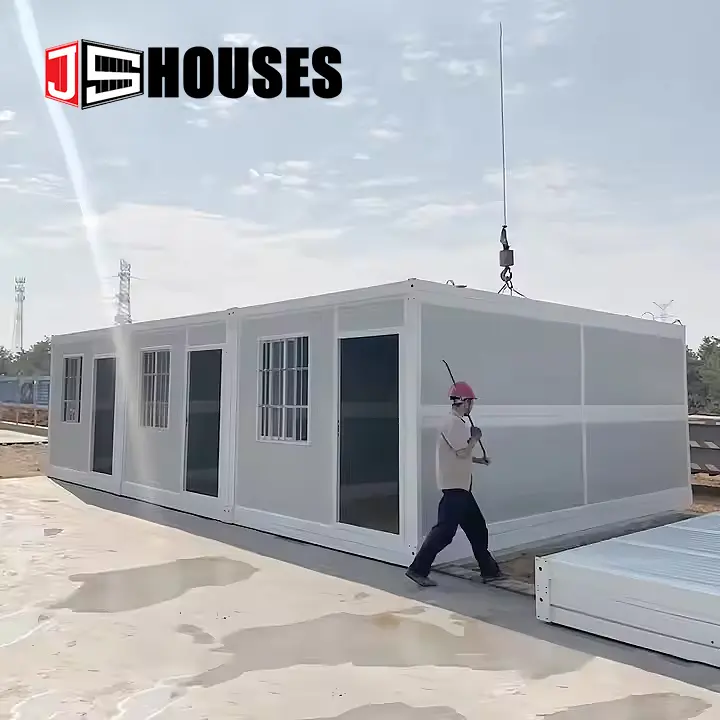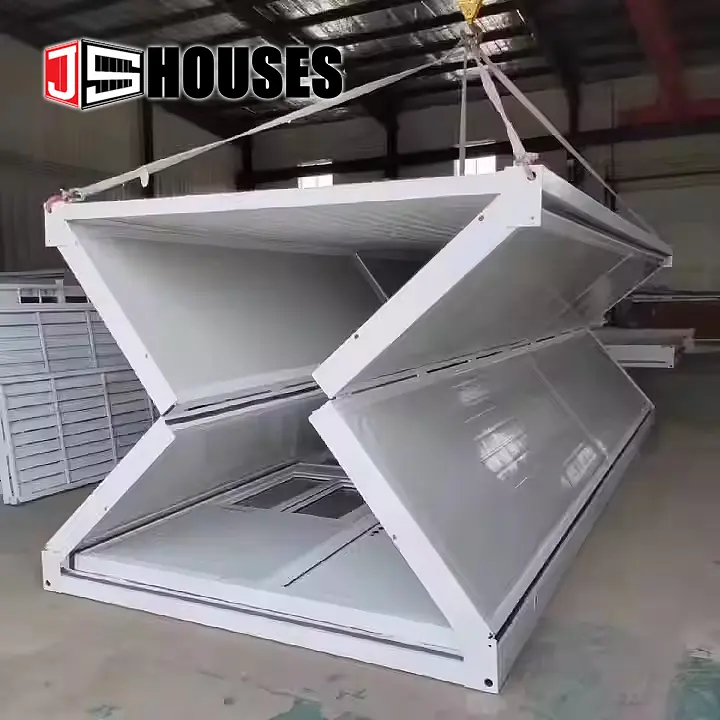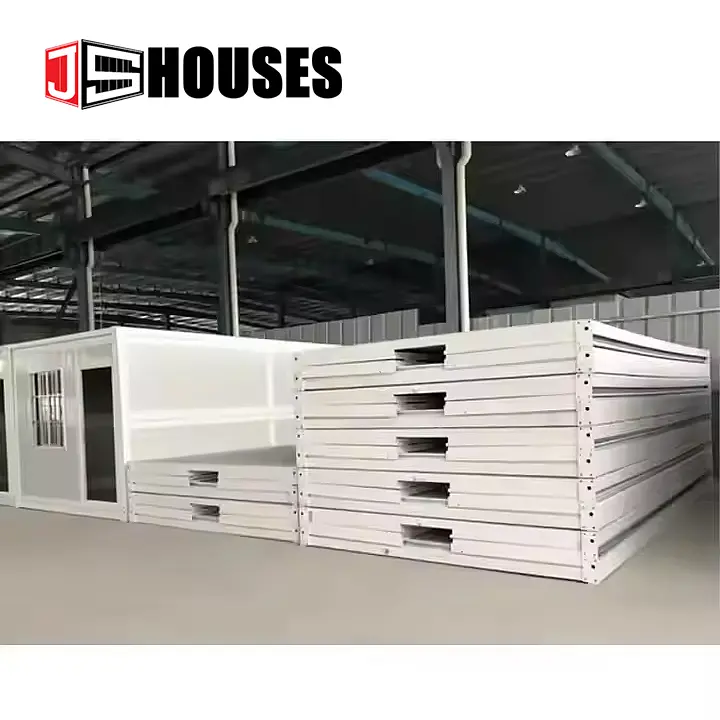What is a foldable container home?
The Revolution of Space: Unveiling the World of Fold Out Container Homes
The global housing crisis, the urgent need for sustainable construction, and a growing desire for minimalist, flexible living have converged to spark a revolution in architectural design. At the forefront of this movement is an innovative fusion of industrial robustness and ingenious engineering: the fold out container home. This is not merely a trend but a transformative approach to creating dwellings that are as adaptable, efficient, and resilient as the lives we lead today. Moving beyond the static nature of traditional container homes, the fold out variant represents a quantum leap, offering expanded living spaces from a compact, transportable core.
This comprehensive exploration delves into the world of fold out shipping container homes, examining their mechanics, benefits, challenges, and market availability, ultimately painting a picture of why they are poised to redefine modern housing.

Deconstructing the Concept: What Exactly is a Fold Out Container Home?
At its core, a fold out container house starts with a standard ISO shipping container—the same corrugated steel workhorse that moves goods across oceans. The revolutionary difference lies in its transformation. Unlike a standard container home, which uses multiple fixed boxes to create space, a single fold out container is engineered with integrated, hinged wall and roof sections that deploy, much like a pop-up book or a sophisticated piece of camping gear.
When in its closed position for transport, it appears as a standard 20ft or 40ft container. Once delivered to its site and activated—often via a simple hydraulic, electric, or manual crank system—the walls and sometimes even sections of the roof unfold outward. This action can more than double, or even triple, the interior floor space and volume of the original container. The result is a spacious, high-ceilinged home that belies its compact travel dimensions. This process is the defining feature of a container home fold out system, creating instant, ready-to-use space.

The Mechanics of Transformation: How Do They Work?
The magic of a container fold out house lies in its precision engineering. There are several common design approaches:
- Side-Fold Systems: The most prevalent type. The solid walls of the container are replaced with heavy-duty, hinged panels. Once the container is secured to its foundation, these panels swing out horizontally. Often, these unfolded panels become the primary roof and side walls of the expanded structure, while the original container structure forms a central core housing utilities like the kitchen and bathroom.
- Top-Lift Systems: In this design, the entire roof section of the container is hydraulicized to lift upwards. Once elevated, side panels, which were folded against the ceiling during transit, can be lowered or unfolded to form the complete walls, creating a full second story or a vaulted living area.
- Hybrid Models: Many modern prefab fold out container homes combine these approaches. Walls may fold out to create ground-level space, while a section of the roof also lifts to create a mezzanine or sleeping loft, maximizing every cubic inch of potential volume.
The unfolded sections are engineered to lock securely into place, creating a structurally sound and weathertight building envelope. High-quality seals, durable insulation within the panels, and robust locking mechanisms are critical to ensuring the home is as comfortable and secure as any traditional build.
Why Choose a Fold Out Home? The Multifaceted Advantages
The appeal of fold out homes from shipping containers is not singular; it is a compelling combination of logistical, economic, and environmental benefits.

1. Unparalleled Efficiency in Transport and Cost:
This is the most significant advantage. Transporting a fully-equipped home is exorbitantly expensive. A standard 40ft container is a manageable and cost-effective unit for shipping via truck, train, or ship. By using a fold out shipping container house design, you are essentially paying to transport a compact, dense module but receiving a much larger structure upon arrival. This drastically reduces the most variable and often highest cost of a remote build: transportation. When browsing fold out container homes for sale, the listed price often includes delivery, representing immense value.
2. Speed of Deployment and Construction:
Traditional construction is plagued by delays from weather, labor shortages, and logistical hiccups. A prefab fold out container home is manufactured off-site in a controlled factory environment. This allows for parallel processes: while the home is being engineered and assembled in the factory, the site foundation is being prepared. Once the unit arrives, the transformation from container to liveable home can often be completed in a matter of hours or days, not months. This dramatically reduces on-site labor costs and minimizes disruption to the building site.
3. Superior Strength and Durability:
A shipping container fold out house inherits the immense structural integrity of its steel container core. Designed to withstand harsh marine environments and the weight of stacking, these homes offer exceptional resistance to extreme weather, including high winds and heavy snow loads. The steel exoskeleton provides a level of security and resilience that is difficult to achieve with traditional wood-frame construction.
4. inherent Sustainability and Upcycling:
The world is littered with millions of retired shipping containers. Repurposing them into fold up container homes gives a second life to these rugged steel boxes, diverting them from landfills and reducing the demand for new construction materials like brick and concrete, which have high embodied energy. Furthermore, the compact nature of the design encourages a more minimalist lifestyle and, when combined with solar panels, composting toilets, and rainwater collection systems, can facilitate a truly off-grid, low-impact existence.
5. Flexibility and Modularity:
The concept is inherently scalable. A single fold out container can serve as a compact cabin or studio. For larger families or more complex needs, multiple units can be linked together. Imagine two or three container homes fold out units arranged around a central deck or courtyard, creating a custom compound where each module serves a different purpose (living, sleeping, guest wing). This modularity allows the home to grow and adapt with the owner’s needs over time.

Navigating the Market: Price, Availability, and Considerations
For those intrigued, the natural next step is to investigate fold out container homes for sale and understand the fold out container homes price structure.
Understanding the Price Point:
The fold out container homes price is not a single figure but a spectrum, typically ranging from $50,000 to well over $200,000. This wide range depends on several factors:
- Size and Model: A basic 20ft model will be at the lower end, while a luxurious 40ft model with high-end finishes and complex mechanics will command a premium.
- Level of Finish: Are you buying a bare, unfolded shell to finish yourself (“DIY kit”) or a fully turnkey home with appliances, plumbing, electrical, and interior décor installed?
- Engineering Complexity: A simple side-fold model will be less expensive than a sophisticated top-lift system with automated deployment.
- Customization: Standard models are more affordable. Custom floor plans, unique cladding, premium insulation, and smart home integrations all add cost.
- Site Work and Delivery: The quoted price for the unit itself often does not include the foundation, utility hookups, permits, or delivery to a remote site. These must be factored into the total budget.
Where to Find Them:
The market for prefab fold out container homes is growing rapidly. Numerous companies worldwide specialize in designing and manufacturing these innovative dwellings. A quick online search for the key terms—fold out shipping container homes, container fold out house—will reveal a host of architects, builders, and specialized manufacturers. Many offer detailed catalogs, virtual tours, and configurators on their websites, allowing potential buyers to explore options and get preliminary quotes.
Important Considerations and Challenges:
While the benefits are profound, potential owners must be aware of the challenges:
- Insulation and Condensation: Steel is a conductor of temperature. In cold climates, thermal bridging can be an issue without proper insulation. High-quality spray foam or panel insulation is crucial to prevent condensation and ensure energy efficiency.
- Permits and Regulations: Zoning laws and building codes have not always kept pace with innovative housing. Navigating permits can be complex and requires working with a manufacturer who understands and can provide documentation compliant with local regulations.
- Maintenance: The corrugated steel exterior, while durable, may require painting or treatment over time to prevent rust, especially in coastal environments.
- Design Limitations: The fixed dimensions of the container core and the mechanics of the fold dictate certain design parameters, which can limit architectural freedom compared to a custom stick-built home.
The Future is Unfolding
The fold out container home is more than a clever architectural trick; it is a symbol of a broader shift towards intelligent, responsive, and responsible design. It answers the 21st-century need for housing that is mobile without being temporary, spacious without being wasteful, and strong without being burdensome.
From use as disaster-relief housing and remote workforce accommodations to luxurious off-grid retreats and affordable urban infill homes, the applications are boundless. As technology advances, we can expect the mechanisms to become even smoother, the insulation even more efficient, and the integration of smart home technology even more seamless.
The image of a standard shipping container arriving on a flatbed truck and, within a day, unfolding into a bright, modern, and comfortable home is a powerful testament to human ingenuity. It challenges our very perception of what a house can be. For those seeking a dwelling that embodies efficiency, sustainability, and freedom, the future of housing isn’t just being built—it’s being unfolded. The revolution of space is here, and it is elegantly contained within the four walls of a fold out shipping container house.

